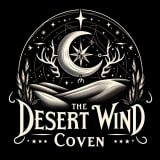But in England, in the Danelaw (the northern and eastern parts of the country that was overwhelmed by invading Vikings when they raided in the Middle Ages), Northern Paganism had a strong influence. Odin became Wotan, and there were some other changes, but our English forebears were familiar with Teutonic stories, and so should we be. Ostara being a time of balance, it’s appropriate to balance our Celtic bent with some of the richness of our “Anglo” heritage now.
Sadly, not much is known about Ostara, save that She was a goddess of Spring. The runes Berkana and Dagaz are associated with her Sabbat (called a Blot in Asatru; “blot” rhymes with “boat” and means “blessing”).
Berkana (in Anglo-Saxon, Beorc, pronounced “birch,” like the tree similar to the poplar the Anglo-Saxons associated with this rune) is a rune of the Earth, associated with several Norse Goddesses and Their qualities. Dagaz (in Anglo Saxon, Daeg) means “day,” in the sense of the 24-hour period, not just the daylight hours. It’s easier to understand the ways in which these runes might relate to Ostara as a Goddess of Spring if we take a look at them. Berkana, fairly obviously, can look like a woman’s breasts seen from the top, or if she’s in profile, her breasts and pregnant belly. According to Freya Aswynn (Leaves of Yggdrasil), Berkana symbolizes “the emergence of an agricultural society, based on settled villages, which replaced the hunting and gathering society.” Kveldulf Gundarsson, an Asatru law speaker and rune teacher, is the author of several articles on the runes and other Teutonic subjects. In Teutonic Magic he notes that the Earth “receives the sacrifice/seed and holds it within herself, guarding and nourishing it until the time has come for it to return to the worlds outside again.” He calls Berkana a rune of “bringing-into-being,” which relates it well to Spring.
Berkana and Dagaz (Beorc and Daeg in Anglo-Saxon) are two runes that are significant at Ostara.
Dagaz represents a staff, and a staff helps us keep our balance. Clearly, this Rune is balanced symmetrically, too: it’s neither invertible nor reversible—it looks the same whether you flip it horizontally or vertically. Either way (and whether the outer lines are extended or not) one side can represent dark, and one side light, the 24-hour day, and the Winter and Summer halves of the year. It can also represent dawn, a symbolism that also fits its association with Ostara.
We’re focusing on the Anglo-Saxon elements and the heritage Wicca shares with Asatru in our discussion of Ostara not to leave the Druids out, but because, as liturgist Kirk Thomas says, “Spring Equinox—you call it Ostara—has no historical basis in Celtic mythology.” The Sonoran Sunrise Grove here in Tucson does hold an open Ostara ritual, for the ADF works to restore a custom of open Pagan worship to our modern lives. But how they celebrate Ostara varies from year to year, because there is no “traditional” Druidic Ostara rite.
So, how do the Asatru celebrate? It’s important to understand that, although there are a couple of different branches of Asatru, there are certainly general guidelines for celebrating each holy day. Though the Wheel of the Year is distinctly Wiccan, and the Asatru observe well more than eight holy days through the year, several of them historical anniversaries, many Asatruar do celebrate the Sabbats that Wiccans recognize.
For the Asatru, Ostara usually falls in the month following the actual Equinox—Gundarsson thinks that traditionally, it may have fallen on the full Moon of that month. Freya Aswynn tells us (in Leaves of Yggdrasil) that in Asatru’s homelands, Norway and Iceland, there were three main festivals in the year: “Thorriblot at Yuletide, Siggiblot in Spring, before they went ‘a-viking,’ and a harvest festival....” But in Germanic and English cultures, she says, the festivals corresponded with the celebration of Solstices and Equinoxes.
An aside to answer a question that may go unasked: In Old Norse, “vyk” means “stream” or “river,” and “viking” is actually a verb, meaning to go up a stream or river. Literally translated, “vikings” would be the journeys up the inlets and fjords that landscape the North. In English, though, the word refers to the people who took the journeys—the sailors and soldiers who went out exploring, raiding, and claiming new land for their people
We know that, as in most Pagan religions, Asatru Priests led processions through the fields, to bless the newly sown crops. Gundarsson says that “the giving of colored eggs was also a part of this ritual, and still is.” Aswynn recognizes Ostara as a “festival of birth,” focusing on physical fertility, leaving, as Wiccans do, the more metaphysical aspects of union and creativity for Beltane.
With the warmer and longer days, the snow begins to melt and we can come outside again. Alright, in most places we’ve been able to get outside when we need to—few of us are literally housebound all Winter. But most of us get at least a touch of cabin fever, and since the Fall we’ve been focused on “inside” work—coming back from vacations, getting back to school, planning for the holidays, and so forth.
We can stretch; we can run and gambol (as the newborn lambs do). Spring cleaning begins now: we can leave our doors and windows open for at least a little while without freezing the house; air the bedding and wash our clothes properly with some hope they’ll dry! As we unfold ourselves from our hearths, adjust to the growing levels of light, and get back into outdoor work, we feel almost like new people. From what’s going on in the natural world and in our own lives, we derive the main themes of Imbolc: the return of light, Spring cleaning (inside and out: our hearts and minds as well as our houses and yards), and rebirth—in lambing and calving and sprouting, and in our own initiations (of people and projects).
Despite our modern, technologically assisted lifestyles, we share with our ancestors a great joy when we notice Spring’s return. Among our Asatru cousins, the Festival of Vali is a blot (pronounced to rhyme with boat) celebrating the restoration of order. (Vali sacrificed himself to avenge the slaying of Baldur, another and much-beloved god.) Disting-Tid, also known as the Charming of the Plow, is a closer equivalent to Imbolc, though.


